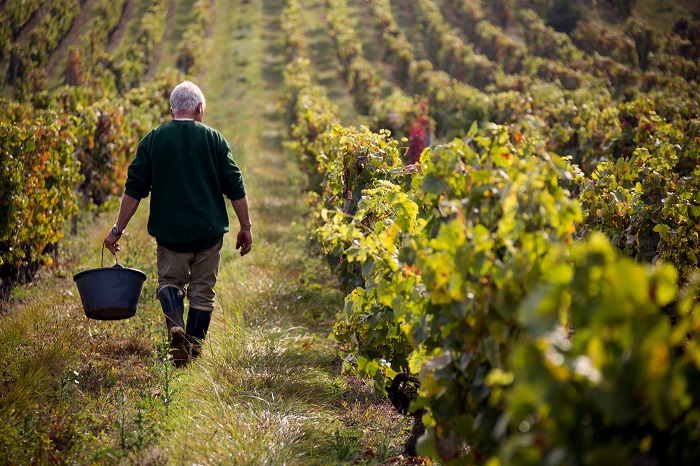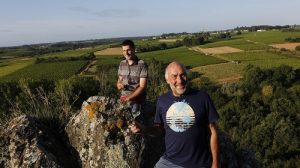
As the grape harvested have started in France, we are here to answer some of your most frequent questions about grape picking…
1/ Do all harvests start at the same time?
The ‘starting pistol’ that marks the beginning of harvests varies depending on various criteria such as the region’s climate, the slopes gradient and their exposure to the sun.
While grapes for dry white wines and red wines are picked at around the same time (late August, early September), grapes destined for ‘vendanges tardives’ (late harvest) wines are picked later, having slowly ripened in the sun, thereby increasing the sugar levels. Those used for sweet wines from a ‘sélection de grain nobles’ are picked one by one, as the grapes affected by noble rot in the beginning of autumn. As for ice wines, these are produced with frozen grapes picked at night in mid-winter.
2/How long do the harvest go on for?
This question has a similar answer as the first one; it depends. If the grapes are harvested one by one, the harvest is going to last a while. The size of the estate also has an influence on the duration of the harvest as does the strategy the winemaker chooses. Some prefer to collect the grapes from all the plots at the same time, while others prefer to wait until each plot has reached perfect ripeness and harvests them separately over several days.
3/Mechanic or manual harvests?
There are two schools of thoughts, both of which have their pros and cons. The oldest grape picking technique is by hand. While it is obligatory in certain appellations – for example the steep terraces of the northern Rhône, or for some types of harvests (selection de grains nobles), it is endorsed by domains striving to make wine of the best quality.
In some very hot regions, though, it is best to harvest quickly so that the sun doesn’t ruin the harvest. This means no problems concerning time, comfort (fatigue, pain) and logistics (fewer grape pickers are needed): machines therefore have their advantages. This method is indeed authorized in the cahier des charges for organic wines.
4/ Grape picking, the festive season?
If there’s one (student) job to do once in your life, grape picking is it. As well as learning the value of physical exertion, it’s a great introduction to the world of wine, among the industry’s most important individuals, in a fun environment. Waking up at the crack of dawn to a copious breakfast, then heading out into the vineyards for a day of picking, come rain or shine. The work is rewarded with a hearty dinner and traditional dinners round off the harvest season. If this is something that interests you, reach out to us and we can give you point you in the direction of some of our partner domains.
5/ What is the “ban des vendanges”?
The ’ban des vendanges’ is the official date that authorises the beginning of the harvest. All over France, it’s the perfect opportunity for celebrating in the vineyards.
6/ What are the risks that threaten the harvests?
As the climax of a year of tremendous work, the harvest can be ruined in the space of just a few minutes. Hail or a violent storm can destroy fragile grapes; rain can also be fatal, if it’s not followed by the sun or wind to dry the grapes, they end up filling with water, leading to a dilution of the aromas and worse still, rot.
7/ How do you know when the grapes are ripe?
There are several ways to know if the grapes are ripe. A refractometer measures the sugar levels of a grape. Some winemakers prefer to ask a laboratory to analyse their grapes, whereas others trust their instinct and experience, relying on the colour of the skin and tasting the fruit. This step allows winemakers to determine the balance between acidity and sweetness and bite the pips.
8/ Why is it important to pick the grapes neither too early nor too late?
The harvest date is extremely important: it must happen when the grapes are perfectly ripe and corresponds to the winemaker’s criteria. By harvesting too early, one takes the risk of producing a wine that is too astringent, with a dominating acidity and vegetal, herbaceous flavours. Harvesting too late runs the risk of picking rotten grapes or grapes that have lost the acidity that is crucial for the balance of a wine. The resulting wine could end up fat and lacking in freshness.
9/ How does a domain prepare for harvests?
In the weeks running up to the harvest, the acidity in the grapes transforms into sugar. Some winemakers help the process along by picking off leaves to expose the grapes to the sun.
Then there’s the logistics. The domain has to find a team of pickers, find somewhere to house and feed them as well as a way to pay them (for some estates). Hygiene is also a crucial point: all of the tools must be perfectly clean, to avoid any contamination and unwanted tastes in the wine.



